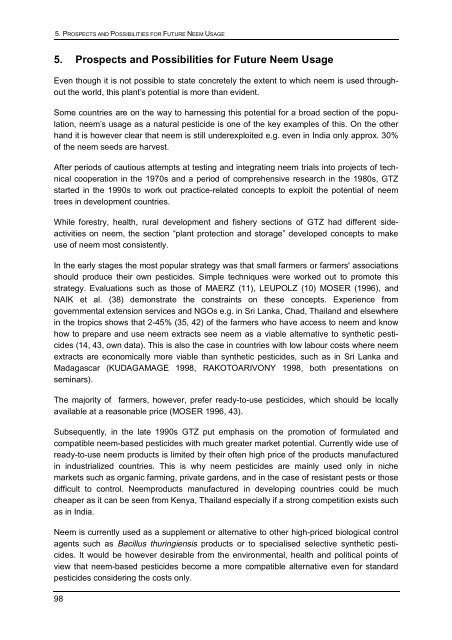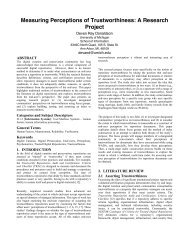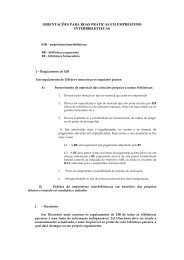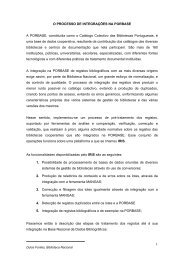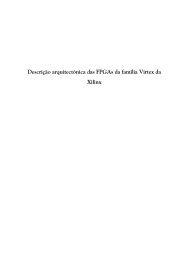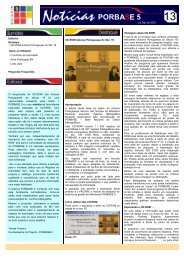Status report on global Neem usage - Biblioteca Nacional de Portugal
Status report on global Neem usage - Biblioteca Nacional de Portugal
Status report on global Neem usage - Biblioteca Nacional de Portugal
Create successful ePaper yourself
Turn your PDF publications into a flip-book with our unique Google optimized e-Paper software.
5. PROSPECTS AND POSSIBILITIES FOR FUTURE NEEM USAGE<br />
5. Prospects and Possibilities for Future <strong>Neem</strong> Usage<br />
Even though it is not possible to state c<strong>on</strong>cretely the extent to which neem is used throughout<br />
the world, this plant’s potential is more than evi<strong>de</strong>nt.<br />
Some countries are <strong>on</strong> the way to harnessing this potential for a broad secti<strong>on</strong> of the populati<strong>on</strong>,<br />
neem’s <strong>usage</strong> as a natural pestici<strong>de</strong> is <strong>on</strong>e of the key examples of this. On the other<br />
hand it is however clear that neem is still un<strong>de</strong>rexploited e.g. even in India <strong>on</strong>ly approx. 30%<br />
of the neem seeds are harvest.<br />
After periods of cautious attempts at testing and integrating neem trials into projects of technical<br />
cooperati<strong>on</strong> in the 1970s and a period of comprehensive research in the 1980s, GTZ<br />
started in the 1990s to work out practice-related c<strong>on</strong>cepts to exploit the potential of neem<br />
trees in <strong>de</strong>velopment countries.<br />
While forestry, health, rural <strong>de</strong>velopment and fishery secti<strong>on</strong>s of GTZ had different si<strong>de</strong>activities<br />
<strong>on</strong> neem, the secti<strong>on</strong> “plant protecti<strong>on</strong> and storage” <strong>de</strong>veloped c<strong>on</strong>cepts to make<br />
use of neem most c<strong>on</strong>sistently.<br />
In the early stages the most popular strategy was that small farmers or farmers' associati<strong>on</strong>s<br />
should produce their own pestici<strong>de</strong>s. Simple techniques were worked out to promote this<br />
strategy. Evaluati<strong>on</strong>s such as those of MAERZ (11), LEUPOLZ (10) MOSER (1996), and<br />
NAIK et al. (38) <strong>de</strong>m<strong>on</strong>strate the c<strong>on</strong>straints <strong>on</strong> these c<strong>on</strong>cepts. Experience from<br />
governmental extensi<strong>on</strong> services and NGOs e.g. in Sri Lanka, Chad, Thailand and elsewhere<br />
in the tropics shows that 2-45% (35, 42) of the farmers who have access to neem and know<br />
how to prepare and use neem extracts see neem as a viable alternative to synthetic pestici<strong>de</strong>s<br />
(14, 43, own data). This is also the case in countries with low labour costs where neem<br />
extracts are ec<strong>on</strong>omically more viable than synthetic pestici<strong>de</strong>s, such as in Sri Lanka and<br />
Madagascar (KUDAGAMAGE 1998, RAKOTOARIVONY 1998, both presentati<strong>on</strong>s <strong>on</strong><br />
seminars).<br />
The majority of farmers, however, prefer ready-to-use pestici<strong>de</strong>s, which should be locally<br />
available at a reas<strong>on</strong>able price (MOSER 1996, 43).<br />
Subsequently, in the late 1990s GTZ put emphasis <strong>on</strong> the promoti<strong>on</strong> of formulated and<br />
compatible neem-based pestici<strong>de</strong>s with much greater market potential. Currently wi<strong>de</strong> use of<br />
ready-to-use neem products is limited by their often high price of the products manufactured<br />
in industrialized countries. This is why neem pestici<strong>de</strong>s are mainly used <strong>on</strong>ly in niche<br />
markets such as organic farming, private gar<strong>de</strong>ns, and in the case of resistant pests or those<br />
difficult to c<strong>on</strong>trol. <strong>Neem</strong>products manufactured in <strong>de</strong>veloping countries could be much<br />
cheaper as it can be seen from Kenya, Thailand especially if a str<strong>on</strong>g competiti<strong>on</strong> exists such<br />
as in India.<br />
<strong>Neem</strong> is currently used as a supplement or alternative to other high-priced biological c<strong>on</strong>trol<br />
agents such as Bacillus thuringiensis products or to specialised selective synthetic pestici<strong>de</strong>s.<br />
It would be however <strong>de</strong>sirable from the envir<strong>on</strong>mental, health and political points of<br />
view that neem-based pestici<strong>de</strong>s become a more compatible alternative even for standard<br />
pestici<strong>de</strong>s c<strong>on</strong>si<strong>de</strong>ring the costs <strong>on</strong>ly.<br />
98


